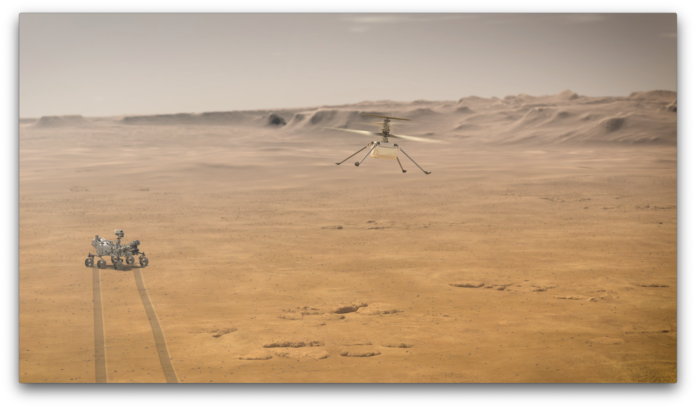The newest Mars rover successfully landed Thursday afternoon on the Red Planet. The landing is of interest locally because of the many components created by Valley-region companies.The Perseverance rover ended its seven-month journey to Mars with a touchdown at the Jezero Crater and began its mission of searching for signs of life.Powering the rover is the Multi-Mission Radioisotope Thermoelectric Generator, a plutonium-powered engine that was built by Aerojet Rocketdyne Holdings Inc. at its Chatsworth campus. Contributing to the generator was Teledyne Energy Systems Inc., a subsidiary of Teledyne Technologies Inc., in Thousand Oaks.And traveling aboard Perseverance is Ingenuity, a space helicopter developed and built by Simi Valley drone manufacturer AeroVironment Inc. for the Jet Propulsion Laboratory in La Cañada-Flintridge, which is overseeing the rover mission.Also contributing to the rover was Northrop Grumman Navigation Systems in Woodland Hills, where the LN-200S inertial measurement unit was designed. The unit provides attitude and acceleration information used by the rover’s computer for guidance.Additionally, Saalex Solutions, a division of technology services provider Saalex Corp. in Camarillo, had its Expendable Launch Vehicle Integrated Support 3 team assist the mission by providing engineering and technical integration as well as launch site and Perseverance rover preparation.In an interview with Marina Jurica for NASA TV, MiMi Aung, the project manager for Ingenuity, said the team at JPL has been working on the helicopter for about six years.She was excited that that craft was finally at its destination. Aung explained the steps taken in advance of the first flight, which include turning on the helicopter and its base station on Friday, and then later the deploying of the craft to the Martian surface.“That marks the first moment that Ingenuity operates on its own and surviving that first cold, frigid night on Mars will be a major milestone,” Aung said. “We’ll execute a series of checkouts and then we will perform that very important first flight. If the first flight is successful, we have up to four more flights in the 30 Martian days we have set aside for our flight experiments.”
